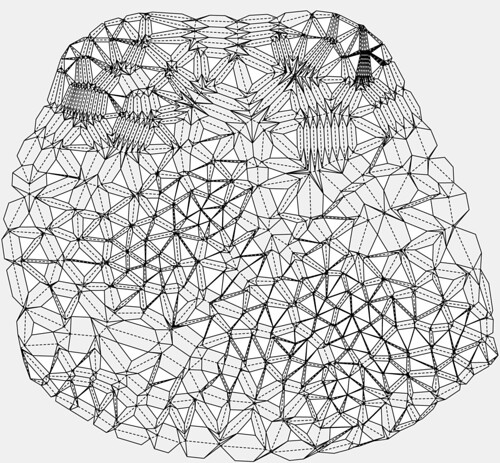
Almost finished with David Bohm and Basil Hiley's The Undivided Universe, continuing my quantum theory boot camp. You have to admire their determination to break the taboo on interpreting quantum theory ontologically.
The situation in theoretical physics is not unlike the situation in contemporary philosophy. Epistemology is king, supporting a not-well-thought-through relationism that sits awkwardly atop what amounts to idealism. Mathematical formulae are held to be more real than physical substances, to subtend them. Why? Because Hilbert space is so beautiful and when you run quantum theory through it, you get all these symmetries, which attracts mathematicians.
It's just about as taboo in physics to propose an ontological interpretation of quantum theory as it is taboo to produce an ontology in contemporary philosophy. People prefer the many-worlds interpretation to Bohm and Hiley, because it sounds bigger, though really it's a bit of a cop-out. It just distributes the problem into a number of different universes, like hiding dirt under the carpet.
What's the problem? In a word, nonlocality, the phenomenon Schrödinger said was the defining phenomenon of quantum theory. It's become almost commonplace to produce nonlocality in the lab, and several devices we now use, such as flash drives, depend on it. Nonlocality is scarily counter-intuitive and it looks like it might be another Copernican humiliation of the human—in this case, the very notion of location in Cartesian space (John Bell: “local realism”) is about to collapse. Why? Because you can entangle particles and keep them somehow in contact across arbitrarily large distances. It's been done between a satellite and Earth, for instance. You should be able to do it across the galaxy...this is not fun for the speed of light, which is finite or at any rate very slow by comparison.
Into the deadlock step Bohm and Hiley, whose work is beginning to get a little more attention than when it was published shortly after Bohm's death in 1992. (Cosmologist Anthony Valentini for instance has his eye on their work.) They produce a remarkably OOO version of quantum theory. There are real entities that are independent of minds and measuring devices—far from the Standard Model that argues that the measuring devices and what is measured form an unanalyzable whole.
These entities such as electrons have an inner structure (see my previous post on quantum innerness) that somehow receives information from a surrounding quantum field, which acts as a kind of radio guidance system. The quantum field, in other words, is an aesthetic ether that is able to bring discrete objects into contact—allure, anyone? On this view, aesthetics is very much first philosophy. Such an information-rich field doesn't require lots of energy to distribute information widely. Bohm and Hiley imagine a ship guided by radio. The radio doesn't have to push the ship—it just has to communicate adequate information to the guidance system.
In so doing, they posit a sub-quantum level of reality, which Bohm calls the implicate order. Hiley and Bohm see no reason to stop there—they too, like OOO, are comfortable with a potentially infinite regress. If that's the price you have to pay for realness, so be it.
There is a vast space between the size of an electron and the Planck length—the deepest theoretical physics has probed, string theory excepted. An electron is about 10-17cm. The Planck length is 10-33cm. There is in other words as much difference between the size of an electron and the Planck length as there is between you and an electron. What is going on in that vast space?
The implicate order could be a deep aspect of the object in which we all find ourselves, the one we call Universe. It's a holographic model in which spacetime breaks down at a certain level, so that “below” that level entities spread out nonlocally. You have to admire their speculative guts, though of course it's not necessary to agree with them to be into OOO, and vice versa.
2 comments:
Yes, Bohm's work is really interesting - a fascinating mixture of dialectical internal relations and Whiteheadian process. I am not sure that it is completely fair to call it 'object oriented' though. Indeed in many senses it is of course the opposite! However, it clearly speaks to your conception of 'hyper-objects'. I look forward to reading more of your thoughts on this.
I interviewed Bohm's collaborator F David Peat over several days last summer, and I will soon put some excerpts of that interview up on http://www.rheomode.org.uk
PS I enjoyed your recent video paper at the Design Ecologies symposium. I was on after you, at the event. I will also try to get a short review of that up soon.
PPS I would like to interview you (for the same book I am working on that David Peat was interviewed for).. would you be up for that? You can reach me on twitter @jongoodbun
Hi Jon, agreed--though I became a little bit convinced that there was a sliver of OOO there...it's been occurring to me for a while that they are talking about the mother of all hyperobjects...interview away, I would be deeply honored, and how strange that we were on so close together at that great event!
Post a Comment